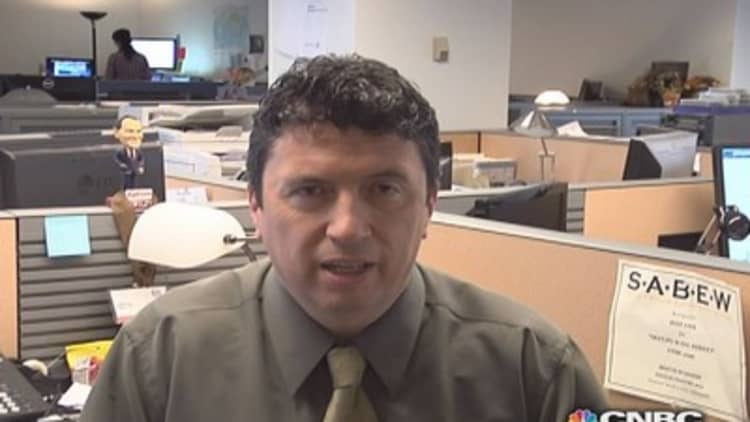
The Federal Reserve may not be happy until it gets unemployment all the way down to 5.5 percent, if statements from central bank officials and other economists are an indication.
Up until recently, the U.S. central bank appeared steadfast on a benchmark of 6.5 percent before it began normalizing its target for short-term interest rates from the near-zero current level. The zero-bound has been in place since the darkest days of the financial crisis that exploded in 2008.
That commitment to concrete targets for policy change has changed recently, however.
(Read more: Fickle Fed: Taper could arrive in 'coming months')
The unemployment rate has been on a steady downward trajectory, though the October reading showed a slight uptick to 7.3 percent. But it has been doing so in great part due to the shrinking labor force.
At the same time, inflation has remained muted despite the Fed pumping $85 billion a month in liquidity under its quantitative easing bond-buying program.
So with actual job creation still fairly muted and inflation—at least as gauged through conventional government measures—well below the Fed's 2.5 percent warning sign, interest rates probably aren't going anywhere for years.
Bernanke said as much Tuesday in remarks at the National Economists Club annual dinner in Washington.
He warned against using the headline unemployment measure as a gauge because "many other indicators become relevant to a comprehensive judgment of the health of the labor market, including such measures as payroll employment, labor force participation, and the rates of hiring and separation.
"In particular, even after unemployment drops below 6.5 percent, and so long as inflation remains well behaved," he continued, "the (Fed Open Markets) Committee can be patient in seeking assurance that the labor market is sufficiently strong before considering any increase in its target for the federal funds rate."
(Read more: Bernanke backs Yellen's 'easy' policy)
Economists at Goldman Sachs have been monitoring the internal Fed analyses over what would constitute a safe unemployment rate, and said in a paper published Tuesday that the threshold is probably 5.5 percent. That analysis is influenced by two recent papers from Fed economists that concluded waiting for a lower rate would have greater economic benefits.
The Goldman analysis, from Sven Jari Stehn, said the Fed faces the challenge of not merely stabilizing the unemployment rate but also addressing the plummeting labor-force participation rate, which is at a 35-year low.
"Although our analysis is subject to significant uncertainty, our results suggest that taking into account adverse supply side effects--by aiming to normalize both the unemployment and participation rates--strengthens the case for lowering the 6.5 percent unemployment threshold," Stehn said. "Our small model suggests that the most desirable unemployment threshold in this case would be around 5.5 percent."
But the Fed risks its credibility by adjusting its targets.
(Read more: Fed could be about to make a major policy change)
Markets have been reacting to virtually every word that comes out of the Open Markets Committee. Investors want to know when the Fed will reduce the pace of its asset purchases, and when it plans on raising rates.
Though Bernanke is trying to dissuade markets from attaching too much importance to the unemployment and inflation thresholds, minutes released Wednesday from the October Fed meeting showed only grudging support for lowering the 6.5 percent guideline.
That could indicate a fight brewing internally that investors may not like.
—By CNBC's Jeff Cox. Follow him on Twitter @JeffCoxCNBCcom.






